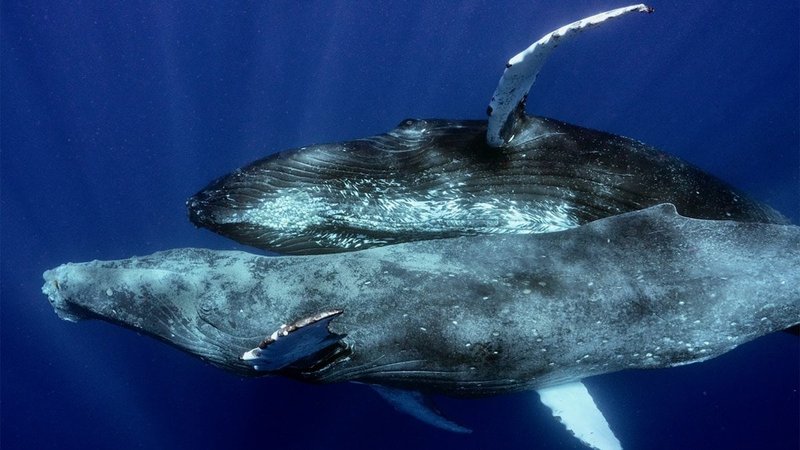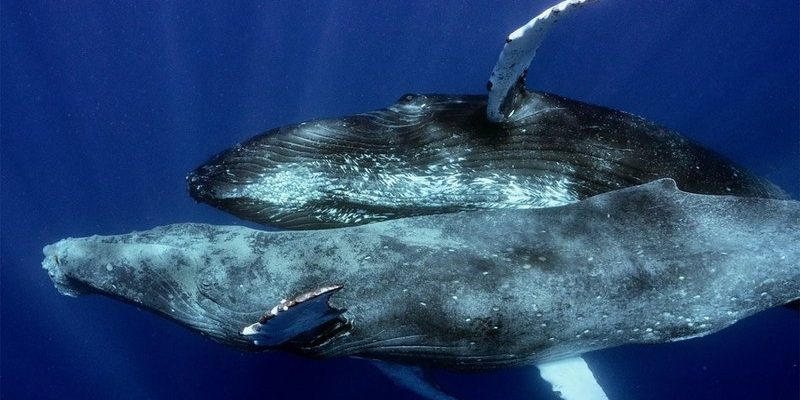
So, what’s the scoop on how sperm whales make more little sperm whales? Picture it like a complex dance, one that involves deep dives, lengthy migrations, and some serious social bonding. Let’s dive into the world of sperm whale breeding and reproduction, where we’ll unpack everything from courtship rituals to the amazing journey of a newborn calf.
Understanding Sperm Whale Social Structure
To appreciate how sperm whales reproduce, it helps to understand their social setup. Sperm whales are known for their unique social groups, often called pods. These pods usually consist of females and their young, while adult males tend to be more solitary or form bachelor groups.
Female sperm whales usually stay with their pod for life, nurturing their calves and teaching them vital survival skills. Meanwhile, the males leave these pods to travel great distances, often venturing into deeper waters. Honestly, it’s a bit like the boys leaving the nest to explore the world while the girls stay back to manage the household and raise the kiddos. This social structure plays a significant role in their breeding habits.
Mating typically occurs in warmer waters during the summer, when males and females come together. You might be wondering how they find each other in the vastness of the ocean. They use clicks and other vocalizations to communicate, almost like a sophisticated underwater sonar. This ability to “talk” to each other is essential, especially when trying to mate across miles of ocean.
The Courtship Rituals
Mating season for sperm whales is an event filled with intricate behaviors and rituals. Here’s the thing: it’s not just about finding a mate; it’s about impressing them. Male sperm whales often display a range of behaviors to attract females. This can include dramatic breaches, tail slapping, and even vocal displays.
When a male spots a female, he might approach her with a series of clicks and whistles, showcasing his prowess. Just like any good date, the goal is to impress. Sometimes, females may select their mates based on these impressive displays or even their size. Larger males typically have an advantage—after all, size can signify strength and health in the wild.
Interestingly, thanks to their robust social structures, sperm whales engage in friendly competitions with other males, vying for the attention of females. This can lead to some fierce encounters, complete with head-butting and physical displays of power, much like a wildlife reality show.
Gestation and Birth of Calves
Once a female sperm whale successfully mates, she embarks on a lengthy gestation period that lasts about 11 to 16 months. That’s right—almost a whole year! During this time, the female takes extra care of herself, often staying close to her pod for support.
When the time comes for birth, typically, females will seek out calm, shallow waters—this is crucial. Why? Because the calf will be vulnerable during this transition from water to the world. Birth often takes place tail-first, which is a unique adaptation that helps prevent drowning. It’s almost like a race, with the baby needing to swim to the surface quickly to take its first breath.
Once born, the calf is usually around 10 to 14 feet long and weighs about 2,000 pounds. That’s a hefty bundle of joy, right? The mother is incredibly protective during this time and will keep her calf close, often nursing it for 2 to 3 years. Imagine trying to raise a toddler who weighs as much as a small car—you’ve got to stay alert!
Calves and Their Early Development
After birth, a calf’s early development is a crucial time for its survival. Right out of the gate, calves are taught essential skills by their mothers. This includes everything from swimming techniques to hunting methods. Honestly, you might say it’s like a whale version of “Survivor,” where the mother ensures her calf is fit to face the challenges of the ocean.
During the first few years, calves stay close to their mothers, relying on her for nutrition and protection. The bond between mother and calf is strong, characterized by a unique set of vocalizations that help them communicate. It’s heartwarming to think that even in the vast ocean, these creatures develop deep emotional connections.
As they grow, calves begin to join the rest of the pod in hunting and socializing, learning from their peers. You might picture these young whales as the teenagers of the ocean, slowly branching out but still relying on their families for guidance and support.
The Role of Males in Reproduction
While the female sperm whales handle most of the nurturing, males play their part in the grand scheme of reproduction. Once males reach sexual maturity at around 7 to 13 years old, they’ll begin to seek out their own mates. However, adult males face a tough road ahead. They often have to engage in battles with other males to earn the chance to mate.
The competition can be fierce, and while it may seem brutal, it serves a crucial purpose. The strongest males usually pass on their genes, ensuring the overall health and viability of future generations. In this way, sperm whales embody the principles of natural selection, where only the fittest thrive.
Interestingly, male sperm whales may travel long distances to find breeding grounds, sometimes crossing entire oceans. Imagine a love-struck whale embarking on an epic journey just to find their perfect mate. That level of dedication is quite remarkable.
Threats to Reproductive Success
Like many marine species, sperm whales face threats that can impact their reproduction and overall survival. One of the most significant threats is human activity, including commercial whaling and pollution. These factors can drastically reduce their populations, making it harder for sperm whales to find mates and successfully raise their young.
Additionally, climate change is impacting ocean temperatures and prey availability, which can affect the health of both mothers and calves. Imagine if your favorite grocery store started running out of food—life would get pretty tough, right? That’s essentially what these whales are facing in their ocean environment.
Conservation efforts are critical to ensuring the survival of sperm whales and their ability to reproduce effectively. Protecting their habitats, reducing pollution, and enforcing hunting regulations are all necessary steps to ensure these magnificent creatures continue to thrive.
Breeding and reproduction in sperm whales is a complex process that goes beyond just mating. It’s about social structures, nurturing bonds, and the challenges faced in an unpredictable ocean environment. Each successful birth adds to the continuity of a species that has been around for millions of years.
By understanding their reproductive behaviors and the challenges they face, we can appreciate just how incredible these creatures are. Sperm whales remind us of the delicate balance of life in our oceans and the importance of protecting these magnificent beings. So, the next time you think about the ocean, remember the beautiful dance of the sperm whale, moving through the depths—unseen, but very much alive and thriving.

